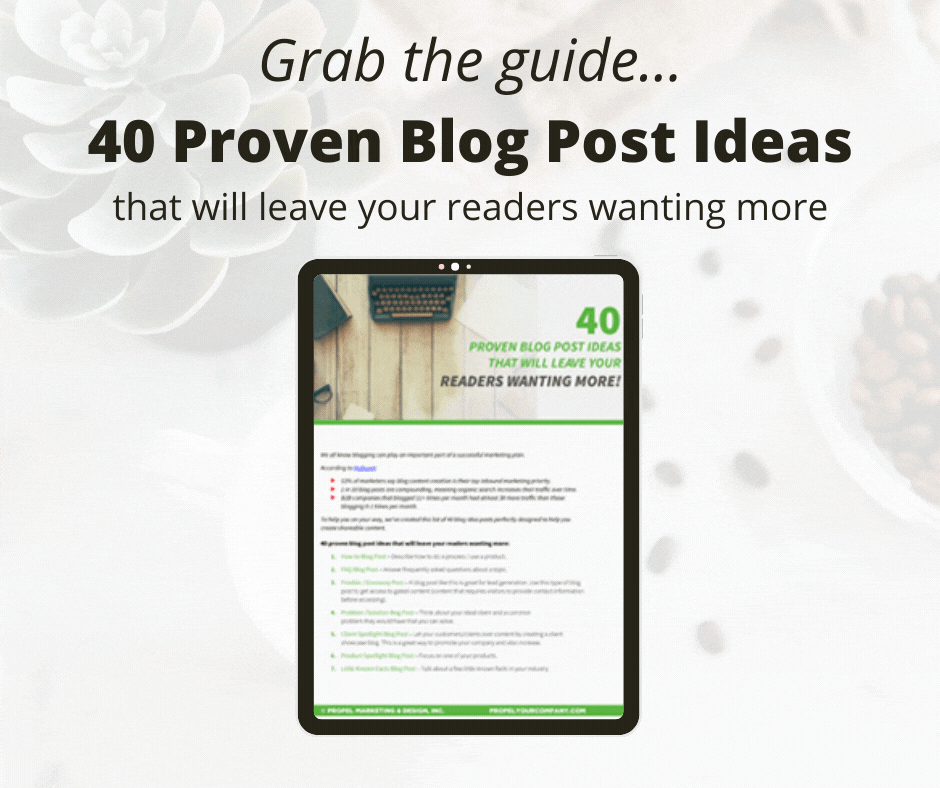Ready to do a dive deep into the world of blogging for clinic owners and healthcare providers?
Do you really need a blog? How often should you publish posts, and how long should they be?
Learn the best practices for creating content that not only attracts visitors but also converts them into new patients.
We'll discuss how to fill content gaps, conduct effective keyword research, and position yourself as an authority in your field.
Whether you're new to blogging or looking to refine your strategy, this episode offers valuable insights to help you grow your audience and boost your clinic's online presence.
From understanding the necessity of blogging to optimizing post length, we delve into strategies for connecting with your audience.
Learn how to bridge content gaps, enhance SEO, and position yourself as an authority.
Here’s what you can expect to take away from this episode:
- Why you need a blog
- The importance of establishing core website pages before starting a blog
- Determining whether content belongs on your main site or blog
- A 5-step action plan for creating an effective blogging strategy
- Identifying your target audience and creating content they want
- SEO optimization techniques for healthcare blogs
- Strategies to convert blog readers into patients or leads
- Best practices for blog post frequency and length
- Some of the necessary SEO elements needed for a good blog post
- How to promote your blog posts
- How long your blog posts should be, and how often you should write them
- And more
Listen to the podcast episode:
Elevate Your Blogging Strategy: How to Create Irresistible Content for Your Clinic's Blog
Blogging 101
Blog. The infamous four-letter word in the content world. I mean, blogging takes time, dedication, creativity… so do you really have to have one? You’re a clinic owner, not a writer. Well, folks, you do. Having a well-written and informative blog can be a game-changer for your business.
Don’t stress. We’ll go over the key factors in writing a successful blog post, so you don’t have to guess at it. This is the first in a series that will answer all your blogging questions and concerns. Get your pencil and notebook ready, and let’s start learning how to write great blog posts!
Do You Really Need a Blog?
Before diving into blogging, it's crucial to ensure your website has the core pages in place. These include:
- Home page
- About page
- Products or services pages
- Common conditions pages (for healthcare providers)
- Contact page
- Privacy policy
- Terms and conditions page
These fixed pages should contain timeless, evergreen content. In contrast, blog posts form a chronological timeline of relevant information. Remember: users visit web pages for information about a company, product, or service, while they come to blog posts for information about a topic.
The Honeypot Approach to Blogging
As Amanda Sellers, Historical Optimization Manager at HubSpot, says: "Your blog is a honeypot, not a megaphone. Make it a point to position your content around what your audience wants to discover, not what you want to tell them."
5 Key Steps for an Effective Blog Plan
- Determine your blog audience
- Create content that attracts your blog readers
- Optimize your blog posts for SEO
- Convert blog post readers into subscribers or leads
- Promote your blog posts
Identifying Your Audience
Consider targeting specific buyer personas for each blog post. Think about the top questions you frequently receive from your target audience and create content around these topics.
Optimizing Your Blog Posts
Key SEO elements to consider:
- Identify your target keyword or phrase
- Use an engaging title
- Properly structure your post with header tags
- Include internal and external links
- Use your keyword throughout the content
- Optimize for conversions with clear calls-to-action
Promoting Your Blog Posts
Share your content through:
- Social media
- Email lists
- Potential influencers who can share with their audience
How Often Should You Blog?
The frequency of your blog posts depends on your resources. It's better to focus on quality over quantity. Aim for consistency, whether that's once a month, twice a month, or weekly.
Consider your competition's blogging frequency to gauge market competitiveness.
How Long Should Your Blog Posts Be?
While there's no definitive answer, modern best practices suggest longer posts than in the past. Aim for 700 to 2000 words per post, depending on the topic and depth of coverage.
Again, consider your top competitors' post lengths as a benchmark.
The SEO Benefits of Blogging
Regular blogging provides new opportunities for search engines to showcase your information to potential clients.
By creating an abundance of quality content, you increase your chances of ranking for relevant keywords and attracting your target audience.
Remember, the goal is to create authentic, high-quality content that addresses your audience's needs and positions you as an authority in your field.
By following these guidelines, you can develop a blogging strategy that not only improves your online visibility but also converts readers into patients or clients.
Listen to the audio version:
Watch the video version:
Selected links and other resources related to this episode:
- 40 Proven Blog Post Ideas
- How to Attract the Right Audience Podcast Episode
- 10 Crucial Pages Every Website Needs to Have
- Ultimate SEO Guide
- Blogs: How Often Should You Blog? How Long Should Your Blog Post Be?
- Propel Your Practice YouTube Channel
- Propel Marketing & Design
- Propel Your Practice Podcast
- Suggest a topic for an upcoming episode of the Propel Your Practice Podcast
- Free training: Five SEO Secrets to Owning the First Page of Google Without Buying Ads
Podcast Episode Transcript
On this episode we're talking all about blogging. Do you really need to blog? How often should you blog? How long should your blog posts be, and how do you leverage blogging to grow your audience?
Hello, and welcome to this episode. I'm Darcy Sullivan with Propel Marketing & Design. Today we going to be discussing some best practices for blogging. We'll talk about how often you should blog, blog post length, and how to convert your blog post visitors into new patients or leads.
One of the key takeaways that I hope you walk away from this episode with is the fact that crafting blog posts that fill in content gaps and covering topics that your main website is missing will lead to a growing connection with your target audience.
Through proper topic and keyword research, you can develop content for your blog that provides answers to your target audience’s core questions and positions you as an authority leader.
Before we dive into some of the best practices when you're putting together a blog post, let's start at the beginning. Do you really need a blog?
If you have a new website before you dive into blogging, I would like to suggest to you that you put together the core pieces of content that you need on your website. We have a blog post that breaks down 10 Crucial Pages Every Website Needs to Have. If you don't already have those pages in place, then I would suggest that you first start with getting the elements of your core website together before you start to write blog posts.
And if you're curious what those pages are, they include your Homepage, your About Page, and Products or Services Pages. If you're a chiropractor or another clinic owner, you also want to include the Common Conditions Page. In addition to that, you want to make sure that you have your Contact Page, your Privacy Policy, and your Terms and Conditions Page.
The pages that I just described are fixed pages that make up your website and they should be full of timeless evergreen content. While blog post, on the other hand, can be considered a chronological timeline of relevant information.
If you're trying to decide if a piece of content should go on your core website as a fixed page or on your blog as a blog post, keep this in mind. Users come to web pages for information about a company, product, or service.
They come to blog posts for information about a topic.
There's a quote from Amanda Sellers, who's the SEO optimization manager at HubSpot that I think helps identify the type of content you should be putting on your blogs. Here's what she said, “Your blog is a honeypot, not a megaphone. Make it a point to position your content around what your audience wants to discover, not what you want to tell them.”
Here are the five key steps when putting together a blog plan of action:
One, determine your blog audience. Depending on your blog post topic, you might want to target a specific buyer persona. We put together a podcast directly about identifying buyer personas if you haven't gone through that exercise.
So, a specific blog post might either target one or multiple of your buyer personas. So first you want to, again, determine your audience for your blog post.
Then you want to create content that attracts your blog readers. If you're just getting started, think of the top three to five questions that you're frequently asked. Putting together blog posts around the most commonly asked questions you receive from your target audience is going to put you in a position where you're already close to identifying the exact content that people just like your target audience are searching for.
So if you're a chiropractor and there are two or three questions that you always get asked about back pain, then putting together a blog post, specifically answering the questions that you're current patients are asking you will lead you in that direction for attracting more of your ideal patients based on the fact that you're targeting the content that they're searching for.
Next, you want to make sure that you optimize the blog post that you're putting together. And when we say optimize, we're referring to SEO– search engine optimization. We have a writer's guide to SEO that you can find on our website or in the Show Notes here.
And on an upcoming episode, we'll walk through the anatomy of an effective blog post as well.
To get you started though, here are a few core SEO elements you want to consider when putting together a blog post.
- First, you want to identify your target audience, which we already did.
- Next, you want to identify the targeted keyword or keyword phrase you want to focus on for that one piece of content.
- You want to make sure that you're using an engaging title.
- That you have properly optimized your posts, meaning that you are using header tags when appropriate, internal links when appropriate, external links when appropriate.
- And that you're using your keyword throughout that piece of content.
Again, in an upcoming episode, we'll walk through exactly what that would look like.
You want to make sure that you're taking actions to not only drive traffic to your blog post but also to convert the blog post readers into either subscribers or direct them to take an action that will convert them into a lead.
At the close of your blog posts, you want to make sure that you give them directions as to what next steps they should take. So that might mean if you are a chiropractor and you wrote a blog post regarding back pain that at the end of the blog post, you might tie it up with a pretty bow by saying if you're suffering from back pain and live in a specific area, please contact us to schedule an appointment.
You also want to make sure that throughout your blog post it's easy for them to schedule an appointment with you. One of the easiest ways to do that is to make sure that you just have a Book Now button in your header so that they can easily book an appointment with you
The last thing that we want is for them to walk away with amazing content from your website without knowing what their next steps are or that they should contact you because you offer a service that will help them.
The final step to creating better blog posts is to make sure that you promote your blog post. You can promote your blog post through social media, to your email list, and share them with potential influencers that can share them with their audience.
Let's move into the two other most common questions I get asked about blogging. How often do you need to blog and how long do each of your blog posts need to be?
The answer to both of these is it depends. When it comes to the question of how often should you blog, it's going to depend on your resources. Are you able to write a quality blog post once a month, twice a month, or once a week?
If you do not have the resources to create a new blog post every single week, then start by using the internal resources you do have and put together a couple blog posts a month. It's more important to have quality content than it is to have quantity.
You want to stay consistent in the amount of blog posts that you're putting together.
It's also a good idea to take a look at your competition. Are they blogging once a week? Twice a month? Once a month? Or do they even have a blog at all? This will give you an idea about how competitive your market is.
Which leads us to the next question, how long should your blogs be? It's really a loaded question as there is no straight answer. We have a very detailed blog post, which we'll share the link to in the Show Notes, that walks you through more detail about the frequency of blog posts, showing data points.
And also data points when it comes to the length of a blog post. But, you want to keep in mind that, you know, five, 10 years ago, you used to be able to get away with writing 300 or 500 words as a blog post. And nowadays, that just doesn't cut it.
If one of your goals in creating these blog posts is to increase your positions online, your organic position online, with SEO, then you want to make sure that your content is, one, authentic, two, that it's quality and three, you're gonna want to extend that word count.
When we write content for our clients, we try to stay between 700 to 2000 words when it comes to a blog post or a page.
Again, you want to look at what your top competition is doing and how long their blog posts are as well as, day in and day out, we are in analytics, looking at what drives traffic to specific websites.
And when we look at the keywords that are driving traffic to websites, you'll notice that all of the top websites in fields like chiropractic care, acupuncture, physiotherapy, all of the clinic owners’ sites that we work with- do the top-ranking sites all have blogs?
And what happens is when you're creating an abundance of content, like blogging, every time you put together a new blog post, you're giving Google a new opportunity to showcase your information directly to the audience that is searching for the products and the services that you offer
Darcy’s SEO strategies are easy to implement and effective. She’s the #1 SEO expert I refer to whenever I need help with my rankings.
- Nicholas Scalice, Growth Marketing Podcast // Growth Marketer
Get our next podcast episode delivered directly to your inbox:
We'll email you when we release new episodes.
Sponsors
This episode of the Propel Your Practice Podcast is brought to you by Propel Marketing & Design. Propel Marketing & Design helps Chiropractors, Acupuncturists, Physical Therapists, Wellness Practitioners, and other clinic owners improve their website rankings.
Do you have a suggestion for an upcoming topic or guest?
We love a good suggestion and we’re happy to take yours! Tell us about a topic you want to hear more about or a guest you think would make an impact here and we’ll take care of the rest.
Interested in sponsoring a Propel Your Practice Podcast episode?
If your organization would be a good fit for our target audience, we’d love to work with you. Hit the link below and let’s talk.










![How to Write a Professional Chiropractic Bio [Template Included]](https://propelyourcompany.com/wp-content/uploads/write-a-bio-500x383.jpg)

